Illustration above courtesy of Icomamerica.com
Digital voice mode use on ham radio is expanding quickly, as more and more hams “go digital.” Here are some handy links to keep track of it all. Suggestions welcome; send to n5csu at arrl.net. And click on the “Casey’s Place” text at the top of this page to check out my blog.
Note: Since these each require Internet connectivity to provide networking capability outside local repeater range, it’s best not to solely rely on them for emergency communications. That’s a good reason to work toward a robust AREDN Ham Radio Mesh Network.
There are five different technologies in use for digital voice on ham radio: D-Star, Yaesu Fusion, DMR, NDXN and P25. The first two were developed specifically for hams, while the last three were developed for public service use (police, fire, business, etc.), and hams have adopted them for fun. I’m using the first three; here’s a bit of info about each.
D-STAR (Digital Smart Technology for Amateur Radio)
D-STAR, the first digital ham radio voice protocol, was developed by the Japan Amateur Radio League in the late 1990s. In the U.S., it is supported by radios from both Icom and Kenwood. There are also third parties that have developed dongles to allow hams to communicate on D-STAR via desktop computer.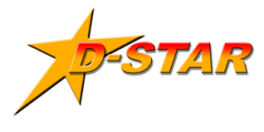
- Introduction to D-STAR
- D-STAR 101
- D-STAR Reflectors
- D-STAR Nets
- D-STAR Latest Users List
- dplus Last Heard List
- XLX Multi-Protocol Gateway Reflectors
- Reflector 01C (Worldwide MegaRepeater)
- Reflector 04B (Texas Permalink Repeaters)
- Reflector 30C (US Linked Repeaters)
- Dallas ARC D-STAR Repeater Status
Yaesu System Fusion
The System Fusion mode was introduced by Yaesu in 2013. It is available only with transceivers bearing the Yaesu brand. This digital mode is often referred to as C4FM, which is actually the type of digital voice method employed by Yaesu. Coupled with their WIRES-X networking protocol, worldwide QSOs are a regular occurence.
I find Yaesu Fusion the easiest digital voice mode in use today, especially for those in reach of a Fusion digital repeater (or a hotspot… see below)..
- Intro to System Fusion
- Wires-X Active Room List
- Yaesu Fusion Repeaters
- Hamoperator.com (great Fusion info resource)
- Beginner’s Corner for WIRES-X and Fusion
DMR (Digital Mobile Radio)
 DMR was developed for the land mobile radio industry in 2005. Over the past few years, hams have also begun using DMR. It’s growing fast due to surplus commercial equipment and the explosion of very inexpensive imported handie-talkies.
DMR was developed for the land mobile radio industry in 2005. Over the past few years, hams have also begun using DMR. It’s growing fast due to surplus commercial equipment and the explosion of very inexpensive imported handie-talkies.
The most amazing feature of DMR (to me) is that a DMR repeater’s input/output is split into two timeslots, so two QSOs using different talkgroups can be transmitted simultaneously!
The first ham specific model handie-talkie, the Connect Systems CS580, was introduced in late 2016. I’m using one and really like it!
- Intro: Amateur Radio Guide to DMR
- US Talkgroups (Brandmeister)
- DFW Area Repeaters, Time Slot & Talk Groups (TRBO)
- Texas BM Talkgroup 3148 (listen in via the web!)
- tg31648 website for DMR Info Net check-in
- DCI c-Bridge
- Brandmeister Network
- Brandmeister Wiki
- Brandmeister User Dashboard
- LonestarNet Control Center
- Programming the CS580
- DMR Repeater World Map
————————————————————————————————————-
Ham Radio Hotspots
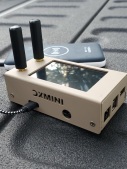
DXMini Hotspot
When you want to use a digital mode and you’re not in range of a digital repeater, what do you do? Well, you set up a ham radio hotspot!
A ham radio hotspot is a low power transceiver (typically 440 MHz) paired with a computer (often a Raspberry Pi) running some free software (like PiStar) connected to the Internet. You use the software to tell the hotspot what to connect to. When it hears a signal from you, it sends it over the Internet to the server of your choice, and vice versa. For example, if you are using D-Star, you can have the hotspot listening to Reflector 1C (worldwide) via the Internet and transmit any traffic back to the 440 frequency that you are monitoring. Anything you transmit back shows up on Reflector 1C. Pretty cool eh? It’s like having your own repeater!
One of the other advantages of using a hotspot is that it allows you to talk cross mode; e.g. Fusion to DMR. Since digital voice modes are not directly compatible, the hotspot (or the connected server) does all the work of translating the protocols.
Here’s a couple of overviews that explain hotspots in more detail:
The DXMini hotspot, made here in north Texas, is one of my favorites. It’s one of a number of hotspots that use a Raspberry Pi computer and the terrific Pi-Star software. I like this one because it is assembled and tested by a ham and the software is preinstalled.
I have a second hotspot, a TGIF Spot, also assembled and configured by a ham.
With either of these hotspots, all you have to do is plug it into your Internet connection and get on the air. Here’s info on Pi-Star and a really helpful primer.
And, finally, here are a couple of photos of the screen on my TGIF Spot; I’m using D-Star and listening to Reflector 30C, a worldwide reflector. The first screen is the “home page” displayed when the hotspot is idle; the second is the screen display when MI3ALR in Northern Ireland was being heard on 30C and retransmitted over my hotspot.
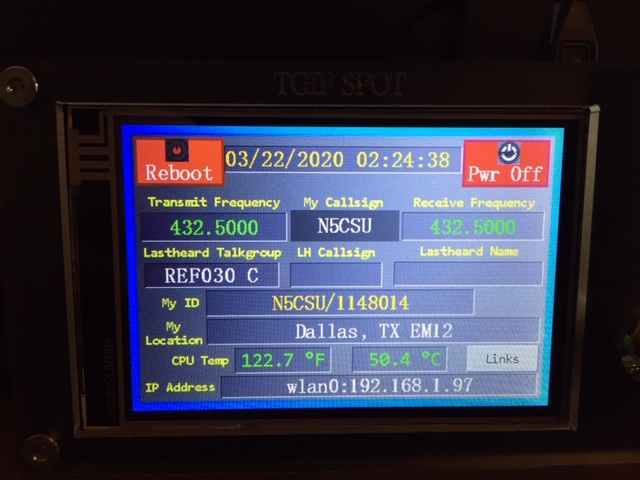
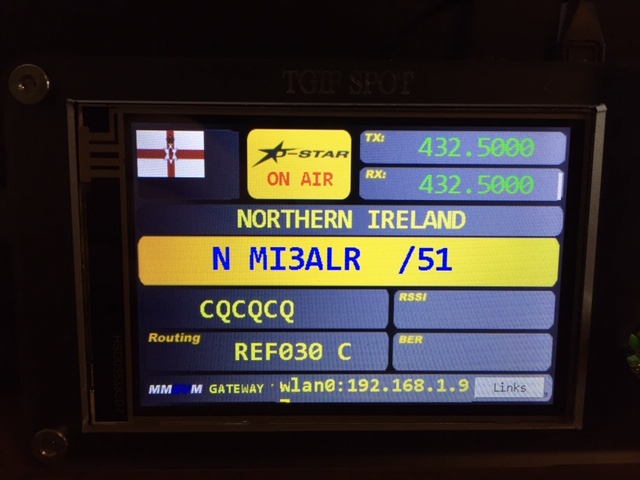
A Few Popular Digital Voice Nets (Times in CST)
- Sun 1900 – International D-STAR Net – REF001C
- Mon 2100 – Raspberry Pi D-STAR Net – REF038C
- Tue 1930 – DMR Information Net – DMR BM 31648
- Tue 1930 – Ark-La-Tex D-STAR Net – REF048B
- Tue 2000 – Texas D-STAR Net – REF004B
- Wed 2000 – TX Statewide – Lonestar DMR 3148 (not Brandmeister 3148)
- Wed 2100 – HamNation After Show D-STAR Net – REF014C
- Thu 2200 – D-STAR PAPA System Roundtable – REF012A
- Sat 2000 – International Fusion Net – (Yaesu Fusion) AmericaLink
Websites with Good Info on Digital Voice Ham Radio
- D-STAR, DMR, Fusion – Which one is right for you?
- DMRTexas
- AlabamaLink
- DMR-MARC
- Digital Communications Interconnect
- Ham Radio Blog – PD0AC
- VA3XPR
- DMR-Utah
- Grapevine Amateur Radio
- IRCddb Live
- xReflector
- Digital Voice Apps and Ham Radio
- TRBO Hits the Amateur Bands

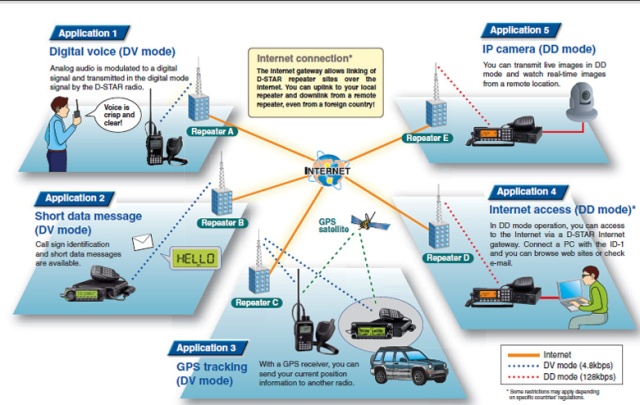
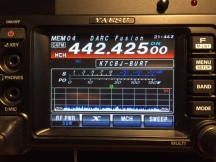
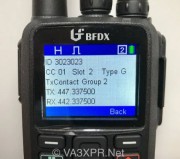
You must be logged in to post a comment.